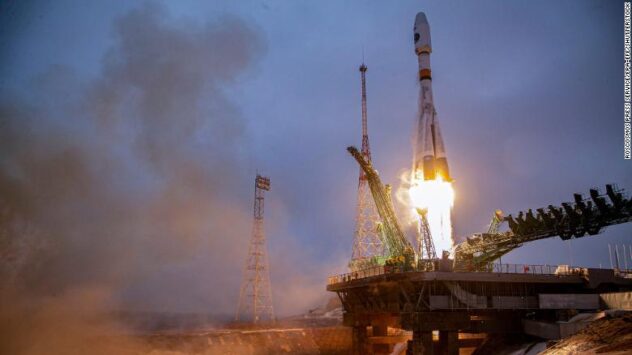
© ROSCOSMOS PRESS SERVICE HANDOUT/EPA-EFE/Shutterstock via CNN
Vocabulary:
- oversee /oh-ver-SEE/
- altitude /AL-ti-tood/
- distress signal /dih-STESS SIG-nl/
- round-the-clock /round-thuh-klok/
- forecasting /FAWR-kast-ing/
[verb] – to watch over something
Please appoint a surveyor to oversee the project’s progress.
[noun] – height above sea level
According to the report, the aircraft was flying at an altitude of 28,000 meters.
[noun] – a signal from a ship or aircraft that is in danger
Quickly send out a distress signal; the ship is starting to sink.
[adjective] – always, at any time of the day
Convenience stores have a round-the-clock service for everyone.
[noun] – the job or activity of judging what is likely to happen in the future, based on the information you have now
Improving weather forecasting is a must in hopes of stopping global warming.
Article reading:
Russia is set to launch another satellite in 2023, and Roscosmos mentioned that the two satellites will offer round-the-clock monitoring of the Arctic Ocean. Over the last three decades, the Arctic has warmed at a rate of more than twice as fast as the global average. Geographer Mia Bennette from the University of Hong Kong said, “As more activity takes place in the Arctic and as it moves into higher latitudes, improving weather and ice forecasting abilities is crucial.”
True or False:
- Russia launched Arktika-M last February 28.
- The satellite can take photos every 15-20 minutes.
- Russia will launch a second satellite in 2022.
- The Arctic Ocean has warmed more than 50% faster than the global average over the last three decades.
- Roscosmos said that two satellites will monitor the Arctic Ocean.
Situational question:
Situation: You will make a report on how we can support Russia in its endeavor to watch over the Arctic Ocean.
Question: What are the benefits of launching satellites to monitor the Arctic’s condition?
- forecast
- global warming
- affect other countries
Express Your Opinion:
- “Climate change is a terrible problem, and it absolutely needs to be solved. It deserves to be a huge priority.” — Bill Gates
- “Earth provides enough to satisfy every man’s need, not every man’s greed.” — Mahatma Gandhi
- “Be part of the solution, not part of the problem.” — Stephen R. Covey